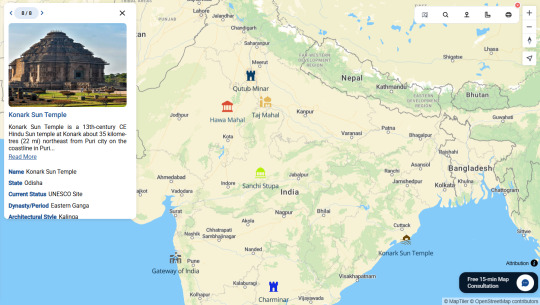#MappingMonuments
Explore tagged Tumblr posts
Text
Mapping India's Heritage: Visualizing Monuments with Interactive Story Maps
India’s heritage isn't just about monuments—it's about the stories they hold, the cultures they represent, and the histories they embody. While traditional lists or brochures provide basic information, they often lack the depth and context that bring monuments truly to life. This is where interactive story maps come into play, transforming how we explore and understand cultural heritage.

Why Interactive Monument Mapping Matters
Interactive monument maps created through platforms like MAPOG visually communicate heritage data, turning static points into vibrant narratives. By plotting monuments geographically and enriching each site with images, histories, and architectural details, stakeholders—from travelers to historians—can easily explore regional patterns and cultural insights. These maps reveal not just where monuments are located, but why they matter.
The Limitations of Traditional Heritage Documentation
Standard methods like text-based documents or simple listings miss critical geographic and contextual details. They fail to capture how monuments relate to their surroundings, historical eras, or architectural styles. Interactive mapping bridges this gap, offering dynamic insights that traditional documents simply can’t deliver.
Benefits Across Different Stakeholders
Story maps of monuments offer significant advantages:
Tourism Professionals: Visualize heritage routes and plan engaging travel itineraries.
Educators and Students: Create immersive, interactive learning experiences that contextualize history.
Conservationists and Researchers: Highlight at-risk monuments and prioritize preservation efforts.
Content Creators and Bloggers: Embed rich, interactive maps to enhance storytelling and user engagement.

From Visual Narratives to Cultural Action
Interactive monument mapping doesn’t just visualize data—it inspires action. Clear, accessible maps help communities, tourists, educators, and policymakers better appreciate and advocate for cultural heritage.
True appreciation and conservation of India's monuments start by understanding their stories in context—and there's no better storyteller than a well-crafted interactive map.
1 note
·
View note